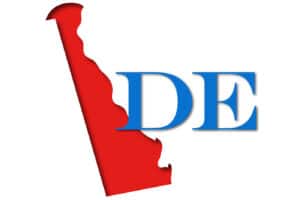The Obama Administration released its FY 2013 budget on February 13, 2012, proposing spending levels for federal departments, agencies, and programs for the fiscal year that begins October 1, 2012. Click here for background on the federal budget process.
The FY 2013 budget proposes total spending of $3.80 trillion, up from an estimated $3.79 trillion enacted for FY 2012. This includes $44.8 billion in gross discretionary budget authority for the U.S. Department of Housing and Urban Development (HUD), a 3.2% increase above the FY 2012 funding level. However, the request in net discretionary budget authority, of $35.3 billion, represents a decrease of 7.6% from the enacted FY 2012 appropriation.
Following are highlights of the FY 2013 budget request for federal housing programs of HUD and of USDA’s Rural Housing Service:
HUD & RD Budget Summary
|
Comparison of FY 2013 Budget Proposal, Enacted FY 2012 Appropriation |
||||
|
HUD Programs |
FY 2012 Enacted |
FY 2013 Proposed |
Difference from FY 2012 ($) |
Difference from FY 2012 (%) |
|
Project-Based Rental Assistance |
$9,339,672,000 |
$8,700,400,000 |
($639,272,000) |
-6.84% |
|
Tenant-Based Rental Assistance* |
$18,914,369,000 |
$19,074,283,000 |
$159,914,000 |
0.85% |
|
Public Housing Capital Fund |
$1,875,000,000 |
$2,070,000,000 |
$195,000,000 |
10.40% |
|
Public Housing Operating Fund |
$3,961,850,000 |
$4,524,000,000 |
$562,150,000 |
14.19% |
|
HOME Investment Partnerships |
$1,000,000,000 |
$1,000,000,000 |
$0 |
0.00% |
|
HOPE VI/Choice Neighborhoods |
$120,000,000 |
$150,000,000 |
$30,000,000 |
25.00% |
|
Community Development Fund |
$3,308,090,000 |
$3,143,090,000 |
($165,000,000) |
-4.99% |
|
Supportive Housing for the Elderly (Section 202) |
$374,627,000 |
$475,000,000 |
$100,373,000 |
26.79% |
|
Supportive Housing for Persons With Disabilities (Section 811) |
$165,000,000 |
$150,000,000 |
($15,000,000) |
-9.09% |
|
Native America Housing Block Grants |
$650,000,000 |
$650,000,000 |
$0 |
0.00% |
|
Homeless Assistance Grants |
$1,901,190,000 |
$2,231,000,000 |
$329,810,000 |
17.35% |
|
Housing Opportunities for Persons With AIDS |
$332,000,000 |
$330,000,000 |
($2,000,000) |
-0.60% |
|
HUD Discretionary Budget Authority (Gross) |
$43,260,000,000 |
$44,763,000,000 |
$1,503,000,000 |
3.47% |
|
HUD Discretionary Budget Authority (Net) |
$38,270,000,000 |
$35,347,000,000 |
($2,923,000,000) |
-7.64% |
|
|
|
|
|
|
|
USDA Rural Housing Service Programs |
||||
|
Section 515 Rural Rental Direct Loans |
$64,478,000 |
$0 |
($64,478,000) |
-100.00% |
|
Section 538 Guaranteed Rural Rental Loans |
$130,000,000 |
$150,000,000 |
$20,000,000 |
15.38% |
|
Section 521 Rural Rental Assistance |
$904,653,000 |
$907,128,000 |
$2,475,000 |
0.27% |
|
Multi-Family Housing Revitalization |
$12,575,000 |
$46,942,000 |
$34,367,000 |
273.30% |
Items of Note
Project-Based Rental Assistance
The Administration’s budget makes significant cuts ($640 million) to the project-based Section 8 program. HUD has indicated that budget commits to renew all existing contracts; however, savings are achieved by funding some contracts extending into the next fiscal year for only 10 months, changing the tenant income calculation for medical expenses, and raising minimum rents to $75. The $8.7 billion budgeted for project-based Section 8 includes $7.82 billion for renewals, $625 million for amendments, $260 million for project-based contracts administration, and a $400 million advance appropriation from fiscal year 2014.
At the 2013 requested level some contracts will receive less than 12 months of funding. The number of contracts affected will be a function of how HUD distributes contracts through out the year. HUD estimates it will provide 12 months of funding for approximately 5,300 renewal contracts. These would include contracts that expire in FY-2013 and most multi-year contracts that have an annual renewal funding cycle through the first quarter of the fiscal year. The remaining contracts will be funded for less than 12 months to varying degrees depending on their renewal dates. As part of the proposal to manage this going forward, HUD expects to put into place some tools that result in cost savings including:
- Applying residual receipts to offset HAP payments from deregulation contracts;
- Contracts renewed under Option 1 and Option 2, HUD will be using the small area FMRs as a benchmark in determining market rents by requiring the justification of market rents determininations that exceed 110 percent of the small area FMRs;
- For contracts renewed under option 4, the proposal would limit exception rent levels to OCAF increases if the increase would go beyond market rents (this is not current policy but is the same proposal currently being proposed in the Section 8 Renewal Guide);
- HUD expects to fund original term amendments through November instead of through September;
- Increase total minimum tenant payments to $75 per month;
- Reduce the time period in which owners can claim vacancy payments from 60 days to 30 days.
Total resources also include a $74 million transfer for implementation of the Rental Assistance Demonstration (RAD) from public housing operating and capital funds. This will allow for the conversion of approximately 24,000 public housing units to project-based rental assistance.
Low-Income Housing Tax Credit
The budget proposes five significant changes to the LIHTC:
- Encourage mixed income housing by allowing owners to average incomes on a proportion of units. The proposal would allow owners to elect to lease to residents earning up to 80 percent of AMI provided that the income limits for at least 40 percent of the project’s units average no greater than 60 percent of AMI. Accordingly, an offsetting number of units would have to have income limits below 60 percent of AMI. Units rented to residents with incomes less than 20 percent of AMI would be treated as having a 20 percent limit. Maximum allowable rents would be determined according to the income limit of the unit. Additional rules would apply to rehabilitation projects containing units receiving ongoing subsidies (e.g., rental assistance, operating subsidies, interest subsidies) administered by HUD or Rural Development.
- Make the LIHTC Beneficial to REITS. The proposal would allow REITS that receive LIHTCs to designate some of the dividends that it distributes as tax-exempt, thus allowing them to benefit from the credit.
- Alternative qualification for 30 percent credit present value credit. In lieu of becoming eligiblle for 30 percent present value credits in the manner provided by current law (i.e. as a result of being at least 50 percent financed by tax-exempt bonds) a qualified building (see definition of Federal Investment Protection Designation below) could also become eligible if a.) there is an allocation of volume cap in an amount not less than the amount of bonds that would be necessary to qualify for LIHTCs; and b.) the volume cap so allocated reduces the state’s remaining volume cap as if tax-exempt bonds were issued. In effect, this would allow preservation transactions to qualify for 30 percent credits without actually being financed with tax-exempt bonds.
- Require LIHTC Supported Housing to Provide Appropriate Protections to Victims of Domestic Abuse. The proposal would require long-term use agreements for LIHTC projects to include protections for such victims similar to those mandated by the Violence Against Women Act for affordable housing that is supported by various federal programs.
Federal-Investment-Protection Designation: This designation can be given by State housing credit agencies only to
projects that satisfy the following requirements:
- The project involves the preservation, recapitalization, and rehabilitation of existing
housing; - The project demonstrates a serious backlog of capital needs or deferred maintenance;
- The project involves housing that was previously financed with Federal funds or benefited
from LIHTC; and - Because of that Federal support, the housing was subject to a long-term use agreement
limiting occupancy to low-income households.
Click here for additional details on these proposals.
HOME and CDBG
The budget proposes to fund the HOME program at last year’s level and does not seek to reverse any portion of the $590 million cut last year. Additionally, the budget proposes moderate cuts to the Community Development Fund account, al though funding for formulate Community Development Block Grants would be at the same level as FY 2012. Compared to two years ago, the HOME and CDBG programs, major sources for years of potential gap financing for multifamily projects, have seen significant cuts.
Homeless Assistance
The budget makes providing assistance to the homeless a very significant priority, increasing funding by $330 million to $2.23 billion. This represents a major shift in funding priority and accounts for much of the overall HUD budget increase.
Project Rebuild & The Housing Trust Fund
As part of “Project Rebuild” proposal from September of 2011, the budget calls for $1 billion to capitalize the federal rental housing trust fund. The fund is targeted to help build, preserve and rehabilitate affordable rental housing and would be administered by HUD and distributed to states as grants under a formula based on shortage of affordable housing. This fund was created as part of the HERA legislation in 2008 and was intended to be funded by profits from the GSEs, which never materialized after their near collapse in the fall of 2008. President Obama proposed $15 billion for a new Project Rebuild program as part of the American Jobs Act, as a a next generation of Neighborhood Stabilization Program (NSP) funds, targeted at addressing abandoned and foreclosed properties for redevelopment.
New Markets Tax Credit
The budget proposes extending the new markets tax credit (NMTC) program for one year, (through 2012), with an allocation of $5 billion. The budget proposes that $250 million of the $5 billion be set aside for financing healthy food options in distressed communities as part of the Healthy Food Financing Initiative. The proposal would also allow the NMTC to permanently offset alternative minimum tax (AMT) liability.
Better Buildings Initiative
The budget once again proposes the “Better Buildings Initiative”, which seeks to make non-residential buildings 20 percent more energy efficient over the next decade by catalyzing private-sector investment through a series of incentives to upgrade offices, stores, universities, hospitals, and commercial buildings.
Other Budget Analysis Resources
If you are looking to learn more about the budget, please
- Nixon Peabody: 2013 budget: good news for housing for now…
- NCSHA: Analysis of the Administration’s Fiscal Year 2013 Budget Proposal
- Enterprise: Administration Fiscal Year 2013 Budget Proposal: Summary of HOusing and Community Development Funding Provisions
Read more about the LIHTC program budget proposals
Full Fiscal Year 2013 Budget
Department of Housing and Urban Development FY13 Budget
Department of Treasury FY13 Budget
Department of Energy FY13 Budget
Department of Interior FY13 Budget
Fiscal Year 2013 Budget: Analytical Perspectives



